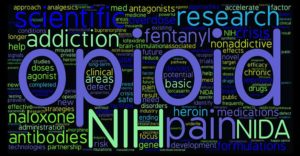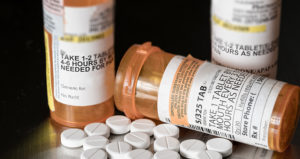September 21st, 2017
The Opioid Epidemic: One Year Later
Harrison Reed, PA-C
A year ago I wrote a blog for In Practice and an editorial in the Journal of the American Academy of Physician Assistants (JAAPA) that discussed the factors contributing to the opioid epidemic in America. If the passionate reaction to those articles is any indication, the topic stirred both intellect and emotion.
Since then, the issue of opioid abuse/overdose has not disappeared. Let’s take a look at some of the recent developments.
New Data Released
The Centers for Disease Control and Prevention (CDC) and other government agencies released new data last week that shed further light on the opioid crisis. These latest data show the number of drug overdose deaths from February 2016 through February 2017. This dataset is important as it is the first to include the period of time following the CDC’s updated 2016 opioid prescribing recommendations and the media frenzy that followed.
Here are the trends you should know. Deaths from the three most prevalent opioid types—natural/semi-synthetic (like oxycodone/hydrocodone), synthetic (like fentanyl), and heroin—all increased over the past year despite reported drops in prescribing rates. But the largest increase in deaths was from synthetics like fentanyl (more on that later). The geographic distribution of drug overdose deaths is also uneven, with some parts of the country reporting a decline (like an 8% drop in Nebraska) while others have seen an explosion in cases (like a 63% increase in Maryland).
The Rise of Fentanyl
Another storyline has emerged from both data trends and media reports: the rise of illicit fentanyl. While the potent synthetic opioid has been a useful tool in certain medical settings for years, its illicit manufacture and abuse is one of the most significant developments in the opioid saga.
Stories of fentanyl’s immediate impact have filtered from some of the country’s hardest-hit areas. The drug is much more potent than typical heroin and is often combined with or laced into other drugs, sometimes unbeknownst to the user. That unpredictability has resulted in body counts that, for some communities, have been treated as mass-casualty events.
A wider view of the raw numbers is startling. The one-year CDC data mentioned above show that 14,465 people overdosed on natural and semi-synthetic opioids (like oxycodone and hydrocodone) while 15,549 people overdosed on heroin. But in the same period of time, 21,163 people died from synthetic opioids like fentanyl. Easily manufactured and highly lethal, synthetic opioids have become a frightening game-changer in the opioid epidemic.
Alternative Narratives
The arrival of fentanyl and other synthetic opioids as a major player in the overdose epidemic may have also opened the door for a troubling narrative. Some in the media and medical community—like the author of this editorial published in Emergency Medicine News—point to the rise of illicit fentanyl deaths as proof that the medical community is not responsible for the epidemic.
This flawed viewpoint implies a lack of obligation on the part of clinicians to find solutions to the nation’s opioid dependence. It also ignores the fact that the vast majority of illicit opioid users began with a prescription drug.
You can read more analysis of this false fentanyl narrative at my website The Contralateral.
President Trump Makes a Statement
The opioid epidemic received some high level attention last month when President Trump issued a verbal statement on the issue.
“The opioid crisis is an emergency, and I’m saying officially right now: it is an emergency,” he said on August 10th from the steps of his New Jersey golf club.
While the comment from the nation’s top official brings an added spotlight, it may lack the formality needed to spur additional action. Saying something is an emergency and signing a formal declaration of emergency are two different things. The latter would have several beneficial effects: it would make FEMA money available to states in need of assistance, allow the redeployment of Health and Human Services (HHS) personnel, and remove Medicare restrictions that act as barriers to substance abuse treatment.
A formal declaration may not happen, though, if HHS Secretary Tom Price’s comments are any indication.
“We believe that, at this point, that the resources that we need, or the focus that we need to bring to bear to the opioid crisis can be addressed without the declaration of an emergency,” he said shortly before the President’s statement.
Despite not having a formal presidential declaration, the CDC recently awarded an additional $28.6 million to 44 states and D.C. to help combat the opioid epidemic. The funding was part of a congressional appropriations bill signed by President Trump earlier this year and will expand several HHS programs.
The money will help states bolster prescription drug monitoring programs, increase opioid risk awareness outreach, and improve surveillance and data-gathering programs.
There are many more opioid-related storylines that we don’t have time to cover in this blog. As new data emerge, we will need to continually reassess the impact of the epidemic and the efficacy of our interventions. If you have an important update to add, please post it in the comment section.







Complex problem. No simple answers.
Need to set up places where addicts can get an education, access to treatment and clean needles.
Need to figure out how to stop the labs manufacturing these chemicals. Much coming in from overseas.
Need to help orgs that work with addicts in education and law enforcement in effectiveness. Jail does not work long term.
Need effective ways to monitor appropriate prescribing of these agents. Need to still work on prescribers who prescribe too much including non-MDs, PA, NPs, like dentists, DPMs, and others. I do not see them mentioned in the educational things I receive, although I hope they are also getting materials.
Lastly, availability of Narcan to all first responders would be a great first start.
Until we begin to distinguish between the “prescription opioid crisis” and the current “illicit opioid crisis”, we will continue to do a disservice to legitimate patients suffering from pain for whom there are no available options to opioids. We, as a medical community and society broadly, need to get real.
Michael,
I find the distinction particularly difficult given the link between illicit opioid use and prescription opioid use.
I’m interested to hear your response to the argument I made in this link provided in the above blog:
https://thecontralateral.com/2017/09/19/an-explosion-of-fentanyl-deaths-should-motivate-not-absolve-the-medical-community/
Thanks for reading and commenting!
Harrison
Our paper will be out soon; you’ll see our argument, which is made quite clearly…with lots of supportive and current state data.
Dear Dr Schatman — Agree with your point and v interested in your paper. Is there a “e-pre-print” you can send? If so, send to slsatel@gmail.com
thank you
SLS
I agree completely that it is irrational to point blame at physicians for “causing” the opioid epidemic. The manufacturers deserve their share of culpability. People also need to take personal responsibility for their own bad decisions.
However, physician anesthesiologists are doing a good job of decreasing our intraoperative use of opioids and focusing on multimodal, non-narcotic means of treating intraoperative and postoperative pain: non-narcotic analgesics, nerve blocks, epidural catheters, etc.
Anesthesiologists who specialize in chronic pain can offer ways to treat pain at the source, again with nerve blocks, steroid injections, spinal cord stimulators, and other non-narcotic techniques. It’s so important to refer patients to pain medicine specialists if there is to be any hope that the opioid epidemic will subside.
See this post for more on decreasing use of intraoperative opioids: http://apennedpoint.com/just-saying-no-to-fentanyl/
Harrison I’ve read your blog and many of the comments. While I agree on much of the substance, in that I’m an unacknowledged victim I would like you to read my somewhat long treatise and thoughts on the issue. I don’t know that you will but I’d appreciate if you could as well as your comments. There is more to this crisis than people acknowledge.
ifubai.wordpress.com